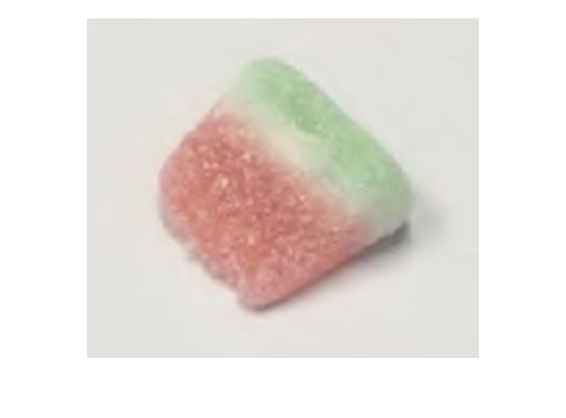il 3 circuito d’appello usa 7 settembre n. 22-2821, Pim brands v. Haribo, giudice Arleo, conferma il primo grado (notizia e link da IPwatchdog)

La forma e i colori indicano il flavour del dolciume: quindi nessuna distintività.
<<The question is whether the candy’s colors alone signal its flavor or whether the colors and shape combined further that function. Though PIM disagrees, we think the two work together. (…)
As PIM notes, the shape and colors do not match exactly: The bottom could be more curved and have a thinner band of darker green. The wedge could be wider. The point could be sharper and a deeper red. There could be black seeds. But as PIM itself put it, because this candy is an impulse buy, it “do[es]n’t need to be the Mona Lisa.” Oral Arg. 13:15–19. To identify its flavor, the candy’s trade dress need not exactly copy watermelon, but just evoke it.
And the shape contributes to the overall effect. Some shapes for watermelon candies, such as sharks, ropes, and rib-bons, detract from (or at least add no information beyond) the colors. But the wedge shape contributes to the function. The colors alone could leave some ambiguity: Is it watermelon or strawberry? With the wedge shape, all ambiguity is gone—this candy is a wedge of watermelon.
In that vein, the wedge might or might not identify the fla-vor on its own or with other color schemes. That trade dress is not before us; the watermelon-colored wedge is. The registered trademark at issue defines the mark by both colors and shape. So does PIM’s complaint. Plus, when we look at the pictured candies, our eyes are drawn immediately to both their colors and their shape. We think of a slice of watermelon based on both its color scheme and its shape. And in this color scheme, the candy looks like a watermelon wedge. So we hold that the trade dress presented as a whole, colors and shape together, makes the watermelon candy more identifiable as a slice of wa-termelon. That is function enough>>.
DA noi la conclusione sarebbe verosimilmente uguale ex art. 9.c – 13.1.b) c.p.i.